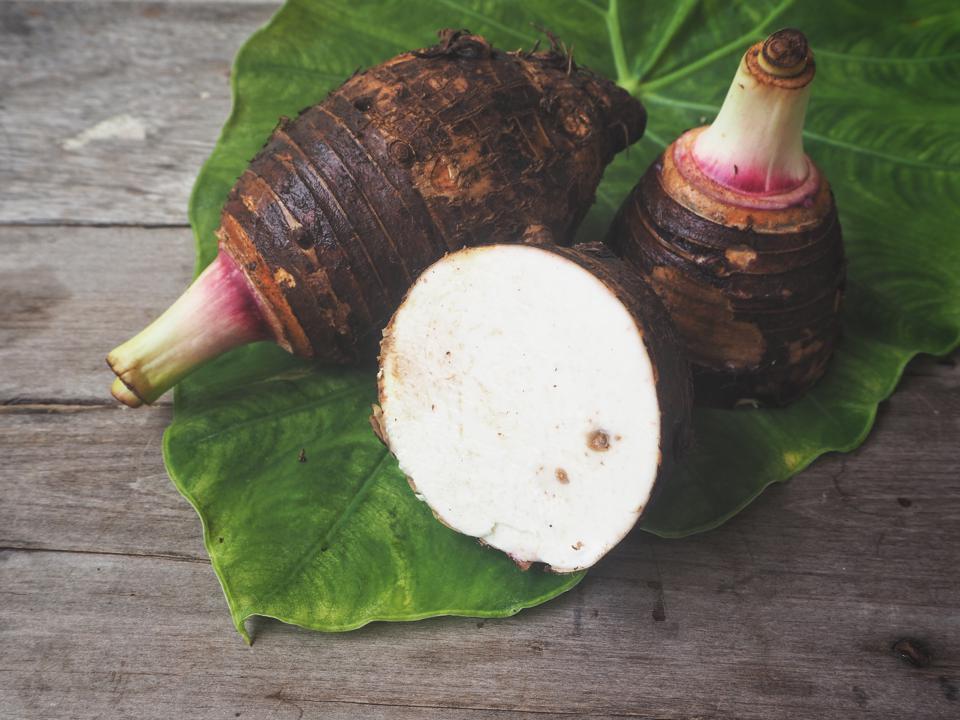Dasheen is among a family of root crops or “ground provisions” grown on the islands of the English-speaking Caribbean, dating back to the early 16th century. Also known as taro, blue food and kalo, historians say that the crop arrived to the Caribbean aboard Trans-Atlantic slave ships, along with African food culture and agro-ecological knowledge.
Stories are told of African slaves foraging for the large, elephant ear leaves of the dasheen plant to make a stew called callaloo or in cassava fufu, a popular West African staple. Steeped in the trials of a colonial past, dasheen is one of a handful of crops that made their way into diets as a product of resourcefulness and making do with little.
Given its historical roots, the starchy tuber has not traditionally been associated with fine dining. Nor has it typically received any degree of noteworthy acclaim, despite its influence on local culture, and substantive nutritional, environmental and economic value.
But with the advent of more conscious eating patterns, the trendiness of farm to fork dining and an upsurge in demand for authentic culinary experiences and indigenous foods, the tuber has been experiencing a global resurgence.
Callaloo, the national dish of Trinidad & Tobago and Dominica, has become the most common recipe associated with dasheen leaves, and is enjoyed throughout the region and around the world. Introduced to a global audience in the 1980’s, as one of Dr Heathcliff Huxtable’s favourite foods in The Cosby Show, callaloo is thought to be an adaptation of a West African stew called palaver or palaya sauce and is traditionally served with a protein such as crab, salt fish or oxtail.

